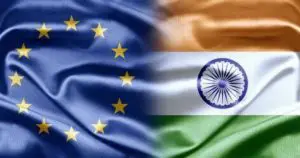Table of Contents
Established in 1989 APEC is an inter-governmental forum for 21 Pacific Rim member economies. APEC aims for regional economic integration by promoting balanced, inclusive, sustainable growth.
Fact: India was allowed in APEC summit in 2011 as an observer state.
Although India has been attempting to join APEC since 1993, but still has not got the membership as:
- India’s geographical location isn’t conducive for India’s membership in APEC as India does not border the Pacific Ocean.
- Some APEC members have expressed concerns that India’s inclusion could shift the focus of the grouping away from its Pacific Rim.
- India’s economic policies are generally considered as protectionist and inward which is considered against the liberalized and free market principles of APEC.
- India’s record in trade negotiations, bilaterally as well as in the World Trade Organization (WTO), has made some APEC economies concerned that including India would slow momentum for achieving the forum’s objectives
- In 1997 a moratorium on membership was put in place for a ten-year period which was extended further till 2010. However currently there is no moratorium on membership.
Why India belongs to APEC?
Economic angle:
- Size of Economy: India is 6th largest economy of World and 3rd largest economy of Asia. Also as the world’s fastest-growing major economy, India represents a significant long-term source of growth for the world economy. This mandates an economy based forum such as APEC to take cognizance of India.
- Opportunities in India: India is projected to be the world’s third largest economy by 2030 and will need well over $1 trillion of investment in infrastructure over the next decade. Its burgeoning middle class, estimated to number 450 million in 2030, will offer huge opportunities for APEC countries which are experiencing sluggish growth.
- Changed Conditions: At the time of inception of APEC (1989), India had not liberalized and was out of sync of APEC economic principles. However, India starting from 1991 has liberalized and India’s trade stands at 40% of GDP now. India even has extensive trade relations with all the APEC member economies.
- Strengthening Economic Integration: Emerging trade regimes could create gaps between the standards and policies adopted by their members and those pursued by non-members. By including a key economy such as India, APEC can play a constructive role by helping bridge such gaps.
- Alternative to China: For APEC members, greater integration with India could offer an alternative source for manufacturing goods. Also India’s large labor market (largest in the world by 2030), will help offset the impact of aging populations and shrinking work forces in APEC economies and offers advantages for sourcing services — in IT, financial services, etc.
Strategic angle:
- Strategic Balance: Inclusion of India could bring a strategic balance and ease the tension within the grouping. India’s record of Non Alignment could bring confidence among the smaller members of APEC amid the impasse between USA and China. Especially, joint efforts of Japan, India and Australia could reduce tension between US and China.
- Political counterweight to China: As a major power in the Indian Ocean, India could provide a balancing counterweight to China for smaller Asian countries that may be wary of the alternative hard stand provided by the US.
- New Indo-Pacific policy of USA: USA under Trump regime has changed the view of Asia Pacific to Indo-Pacific. Inclusion of India in APEC is in coherence with the new approach of US in the region
Benefits to India (UPSC IAS)
- Act East Policy: For further strengthening of economic ties of India East and Southeast Asia through higher trade volumes and greater physical connectivity, APEC membership streamlines the process by standardizing the trade related negotiations.
- Creating Synergy: Through its processes and guidelines, APEC will facilitate India’s implementation of the economic reforms, boost competitiveness and the ease of doing business. APEC membership would also help India prepare for potential inclusion in emerging trade agreements such as TPP (now CPTPP), if India considers joining these in the future.
- Economic Growth: India’s current economic program relies on greater access to foreign markets, investment sources, and value chains to bolster manufacturing and create jobs at home.
- India-US Relations: Supporting India’s APEC bid would demonstrate an American commitment to help strategic partner India gain the greater role in institutions of global governance.
A Way forward (Important for UPSC IAS)
- Diplomatic investment: To gain support of its candidacy of APEC, India needs to work diplomatically with key members like United States and Japan. Also, India could ask China, Korea, Australia, and Vietnam to provide vocal support and diplomatic resources to India’s cause.
- Extensive Study before inclusion: APEC could commission studies assessing the benefits and costs of Indian accession which will help its members to develop consensus on the question of Indian membership.
- Transitional membership: Before providing full membership of APEC a transitional membership could be provided. Transitional memberships could gradually integrate India in ways that satisfy current members and allow India to benefit from APEC’s processes and technical support.



